Limited square footage doesn’t mean limited potential—especially when it comes to outdoor living. With smart planning and the right mix of features, small backyards can become personal retreats that feel both spacious and functional. From layered plant zones to multipurpose furniture, the key lies in layout strategies that serve more than one purpose. Whether you’re aiming for a cozy entertainment spot, a quiet reading nook, or a low-maintenance garden, the ideas ahead are tailored for compact spaces that need to work harder. This guide offers inspiration grounded in practicality, helping you shape a backyard that truly suits your lifestyle.
Layered Seating with Built‑In Benches & Planters
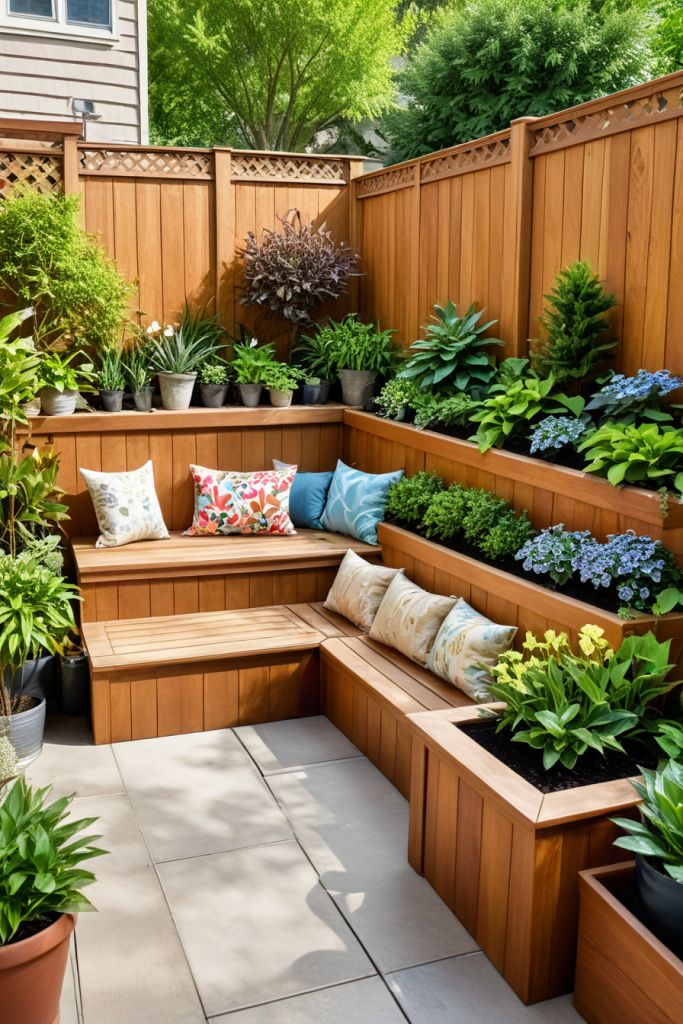
Integrated seating with layered levels brings both comfort and structure to a backyard. Built-in benches with backrests create defined lounging areas while doubling as subtle dividers. When paired with raised planters, this layout seamlessly blends greenery with functionality. Opting for materials like concrete or natural wood ensures durability and visual warmth. Including under-bench storage adds practicality, especially for smaller yards. Placing benches against perimeter fencing allows for more open central space, making the area feel larger. Built-in planters not only soften the hardscape but also provide seasonal interest, particularly with herbs or cascading flowers. Low-growing shrubs or ornamental grasses surrounding the seating zone enhance privacy without overwhelming the layout. Integrating lighting beneath benches or within planter edges extends usability after dark. This approach turns overlooked corners into multifunctional zones that are both practical and visually appealing. The result is a refined yet approachable retreat that supports casual lounging, social gatherings, and plant-focused design without crowding the available space.
Elevated Dining Terrace with Privacy Screens
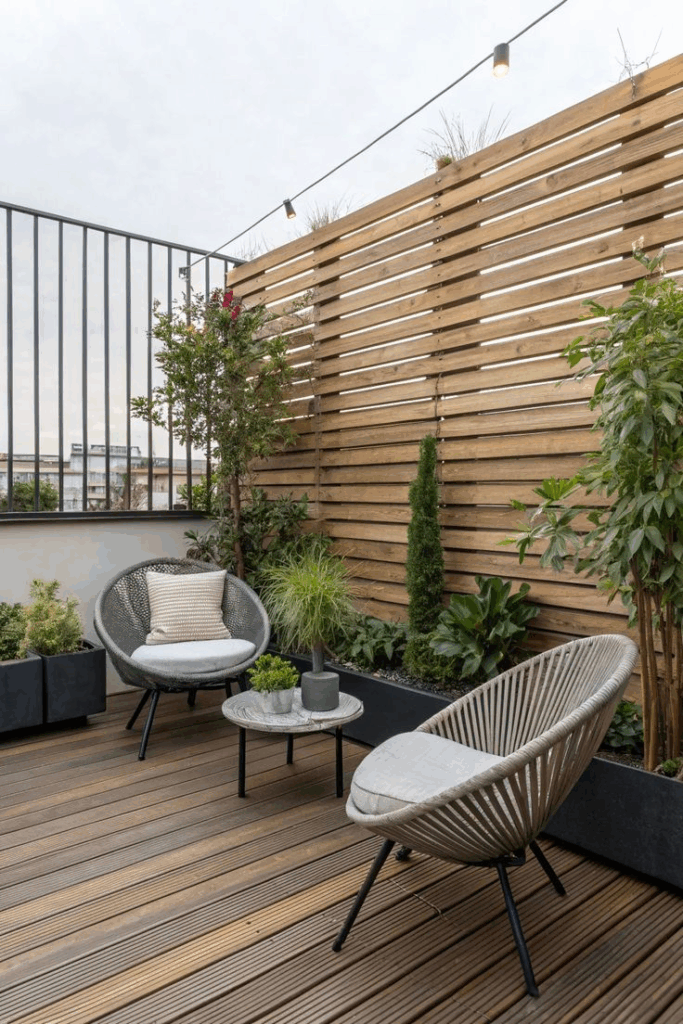
Defined terraces offer a polished solution for combining outdoor dining with built-in privacy. Elevating the space even slightly using pavers or decking materials helps separate the dining zone from other backyard functions. Privacy screens—crafted from timber slats, metal panels, or dense plantings—shield the area from neighboring views while adding texture and height. Pairing the terrace with an overhead pergola can offer additional shade and enclosure. Furniture selection plays a key role in maximizing function—opt for slimline seating to maintain flow in compact layouts. Installing dimmable wall-mounted sconces or lanterns adds ambiance for evening meals. Planters placed strategically around the edges help soften the transition to surrounding spaces. Incorporating climbing vines or tall grasses against the privacy screens enhances the natural appeal without sacrificing seclusion. The elevated structure naturally encourages use by giving it a purposeful, room-like feel. This approach transforms ordinary backyards into intimate open-air dining escapes that blend comfort, privacy, and style.
Vertical Green Screens to Maximize Wall Space

Maximizing vertical surfaces in smaller backyards introduces abundant potential for greenery without encroaching on ground space. Vertical green screens, whether modular metal grids or timber trellises, are ideal for training climbing plants like jasmine, starflower, or ivy. These installations can line fences, flank doorways, or hide unsightly walls, effectively turning plain boundaries into lush backdrops. For added efficiency, incorporate planters at the base to allow roots room to thrive. Built-in irrigation systems or wall-mounted drip setups keep maintenance low and growth steady. Besides visual impact, these screens contribute to noise buffering and increased privacy. Some designs even support edible options like cucumbers or beans for those looking to integrate utility with decor. Installing green walls near seating or dining areas brings in natural cooling and softness. These upright gardens are a strategic, space-saving way to enhance greenery, define zones, and improve air quality while giving vertical walls a renewed purpose in the landscape.
Gravel & Paver Mosaic Pathways for Texture
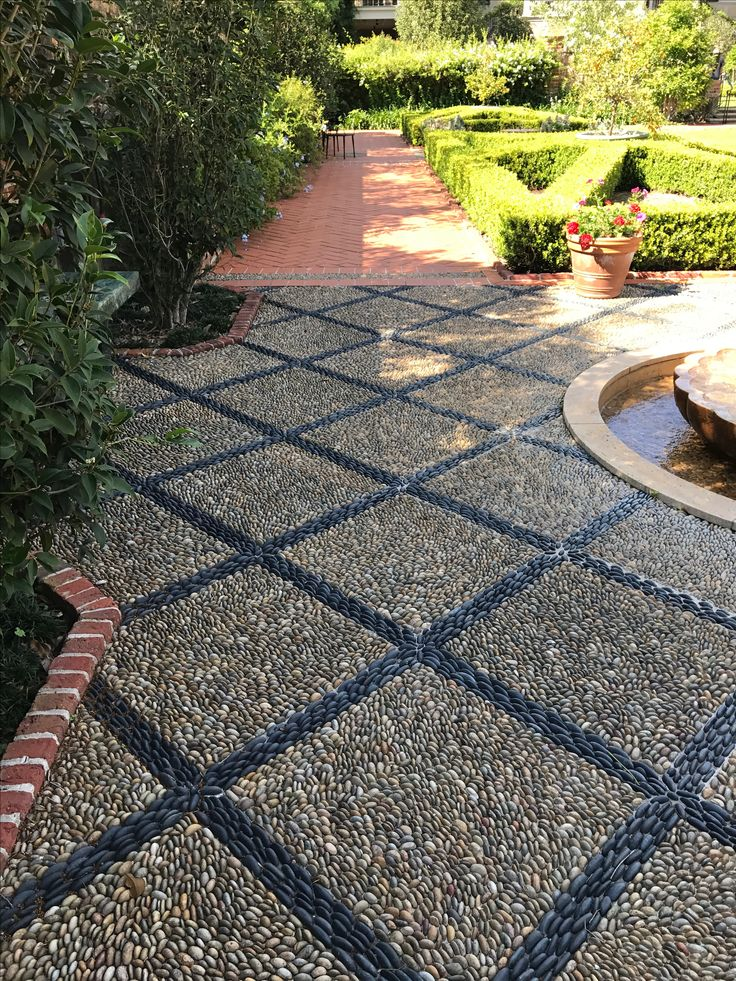
Mixing gravel with pavers allows small yards to gain visual interest without overcomplicating maintenance. Mosaic-style layouts with alternating textures and tones can lead the eye across the space, giving it a dynamic and spacious feel. Larger pavers laid in geometric patterns or irregular stepping-stone paths break up open areas while guiding movement naturally. Pea gravel, crushed granite, or river rock adds softness and subtle crunch underfoot, creating contrast against the solid surface of pavers. This blend helps with drainage and reduces the risk of puddling after rain. Framing sections with steel edging or natural stone borders helps define the mosaic while keeping materials in place. Color variations, such as earthy browns or cool grays, support different design themes from rustic to contemporary. For added charm, tuck small plants like thyme or moss between joints. This approach balances function and aesthetics, providing a low-maintenance, weed-resistant, and visually engaging pathway that suits compact landscapes.
Compact Water Basin as Ambient Focal Point
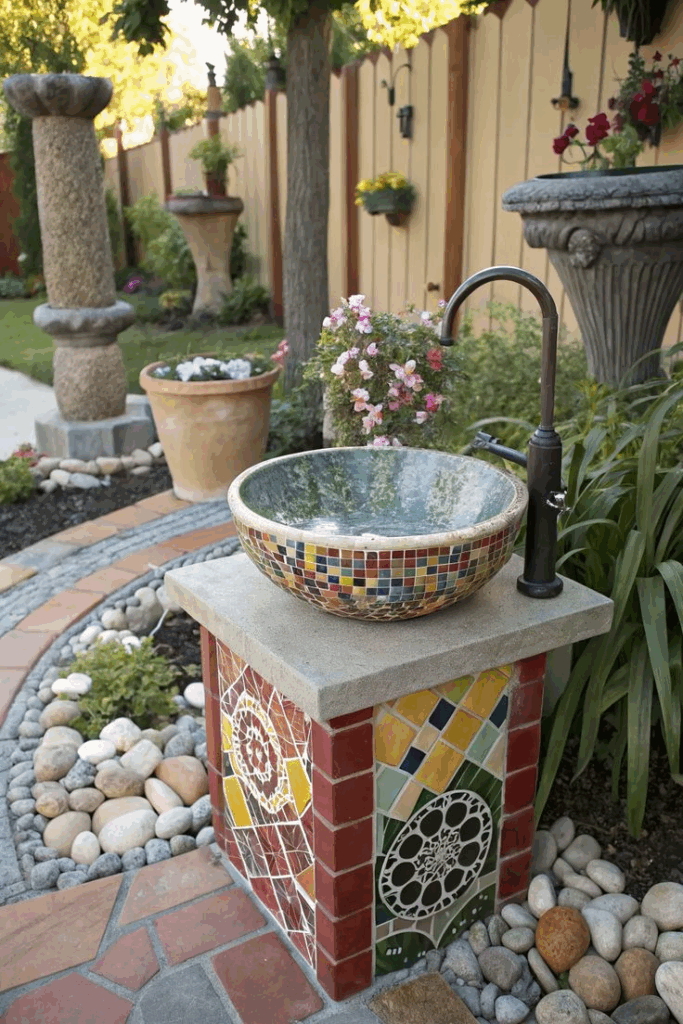
Water features don’t have to be oversized to make an impact. A petite water basin—crafted from stone, concrete, or ceramic—can act as a calm focal point in tight backyards. Placed within a garden bed, beside a seating nook, or in a corner, its presence adds tranquility without dominating the space. Whether still or gently bubbling, the sound of moving water creates an auditory softness that promotes relaxation. Solar-powered pump systems offer energy efficiency and easy installation. For a seamless look, select basin shapes and materials that match other elements in your landscape design. Surrounding the feature with ornamental grasses, ferns, or flowering plants helps it blend naturally. Including subtle lighting nearby extends the basin’s visual impact into the evening. This scaled-down solution suits even the most compact outdoor spaces, delivering ambiance and interest without sacrificing functionality or square footage. It’s an elegant way to introduce a soothing, spa-like element in modern backyard design.
Sunken Lounging Pit with Fire Feature

Lowering a portion of the yard to form a lounging pit offers both shelter and intimacy. This sunken design can be framed with pavers or seating walls to define its edges and prevent erosion. Built-in bench seating around the perimeter allows for efficient use of space and promotes conversation. In the center, a fire feature—whether a modern gas fixture or traditional stone pit—becomes a natural gathering point. The recessed layout buffers wind and fosters a cozier environment, ideal for cool evenings. Durable cushions and weatherproof textiles elevate comfort without overwhelming the footprint. Drainage must be well planned to avoid pooling during rain. Optional features like lanterns, embedded floor lighting, or climbing vines on surrounding walls enhance the mood. This architectural detail breaks up flat yard space while prioritizing functionality and ambiance. For homeowners seeking a striking yet livable outdoor escape, the sunken pit delivers comfort, connection, and year-round usability.
Evening Uplighting on Trees & Shrubs
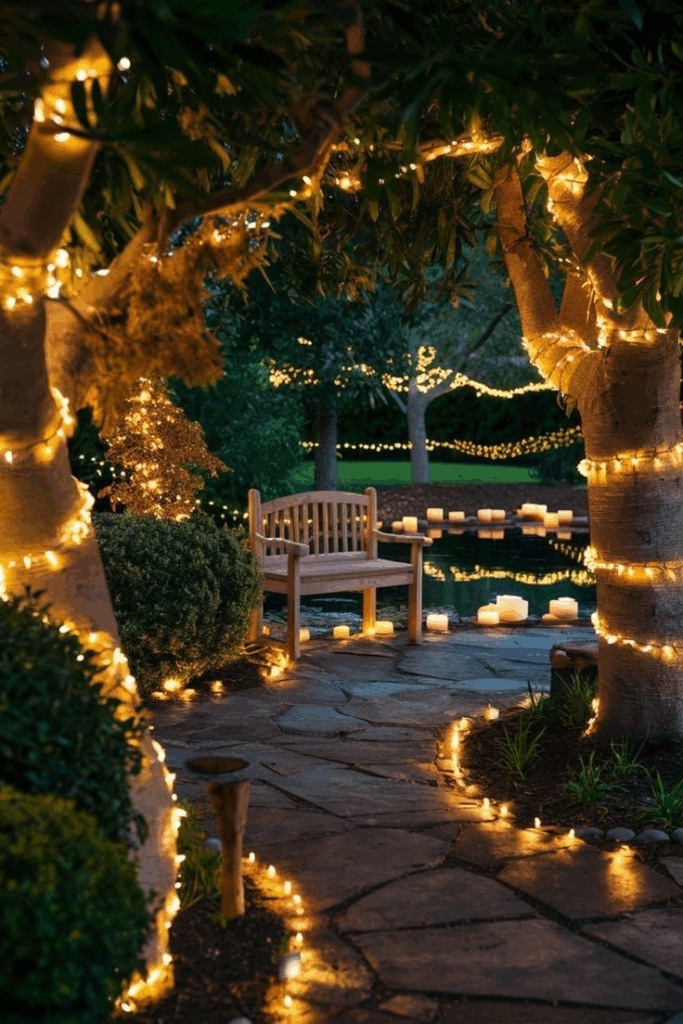
Subtle uplighting transforms plantings into after-dark focal points. Small, low-voltage fixtures placed at the base of trees, tall grasses, or shrubs cast dramatic shadows and emphasize texture without overwhelming the scene. Installing adjustable beam angles allows light to be tailored to the plant’s form, while warm white bulbs ensure a welcoming atmosphere. Cables can be concealed beneath mulch or edging for a clean finish. For added effect, include uplights on focal trees near seating zones or garden edges. This layered lighting strategy enhances safety, accentuates key features, and sets a relaxed evening mood. Solar-powered options work well for smaller shrubs, offering flexibility without wiring. Balancing the number and intensity of lights helps avoid a commercial or theatrical feel. Uplighting works especially well with multi-trunked trees, sculptural succulents, or feathery foliage like ferns and ornamental grasses. It’s a low-profile design element that dramatically expands the usability and character of a backyard once the sun sets.
Mixed Hardscape Levels to Define Zones
Tiered hardscapes divide compact yards into defined sections while maintaining a unified aesthetic. Changes in elevation—even minor—help distinguish activity zones such as dining, lounging, or planting beds. Retaining walls or step transitions built from concrete, stone, or timber can serve dual functions as planters or seating. Choosing consistent materials across levels avoids visual clutter. Textural variety—like mixing smooth pavers with rough rock—adds interest without disrupting flow. Proper grading ensures water drains efficiently between areas. Railings or planted borders improve safety and soften transitions. Lighting along steps or risers boosts usability after dark. Tiered layouts encourage circulation and guide the eye, creating the illusion of more space. This layered approach suits sloped yards especially well but can be applied in flat lots using raised decking or floating platforms. It’s a practical solution for structuring space in a way that balances visual impact with functional zoning.
Fold‑Away Bistro Table for Flexibility

Wall-mounted folding tables provide flexibility without cluttering limited square footage. When extended, these surfaces accommodate quick meals, laptop work, or plant potting tasks. When folded away, they free up room for movement. Ideal for narrow patios or side yards, the design works well near doors, windows, or fences. Durable materials like treated wood, powder-coated metal, or weather-resistant composites ensure longevity. Pairing the table with stackable chairs or stools maintains versatility. Add hooks or shelving above the fold-down area to hold outdoor essentials. Hinges and latches must be corrosion-resistant for smooth operation over time. Painted finishes can match existing decor or introduce subtle contrast. This space-saving solution meets the needs of modern living where every square foot counts. It empowers homeowners to adjust their space based on function and season, proving especially useful for renters or urban dwellers who want stylish practicality with minimal commitment.
Pocket Herb Garden Along Pathways
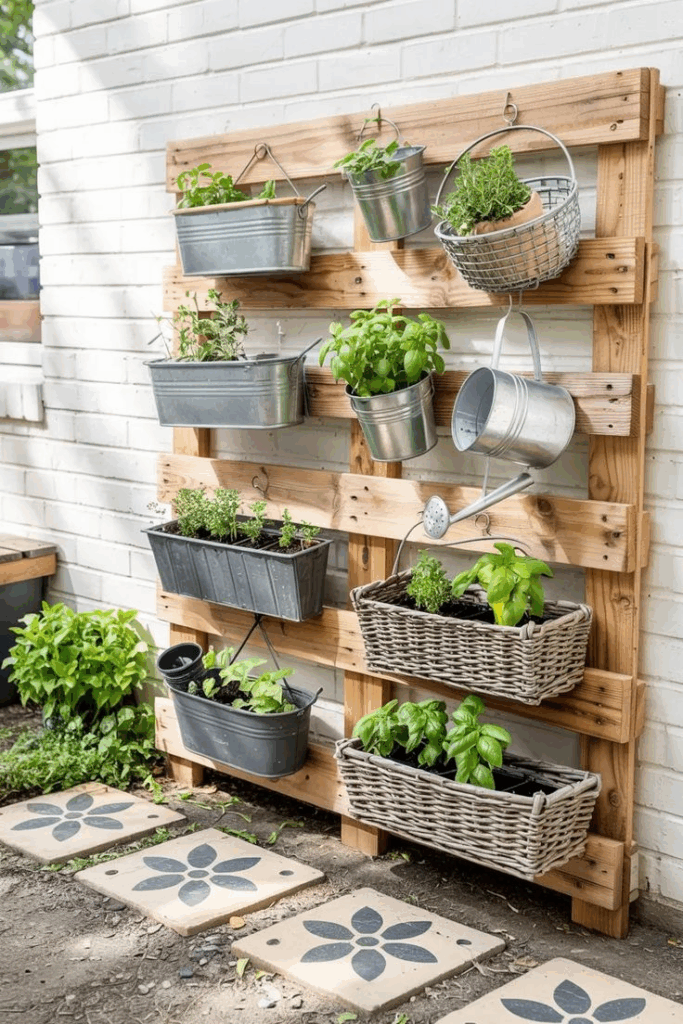
Narrow pathways offer prime real estate for compact gardening. Planting herbs alongside walkways brings fragrance, texture, and culinary benefits in a minimal footprint. Choose hardy, sun-loving varieties like rosemary, thyme, oregano, and chives that double as edible ornamentals. Raised edging or shallow troughs help define planting zones and contain spread. Using gravel or mulch between the plants minimizes weeds and improves water retention. This placement ensures herbs are easy to harvest and visually anchors the path with greenery. Pairing the herb strip with solar stake lights keeps the area usable at night. For added layering, mix low-growers with taller accent herbs like fennel or lemongrass. The concept turns everyday movement through the yard into a sensory experience. It’s a simple yet highly effective method to increase plant diversity, support pollinators, and make small spaces both beautiful and functional.
Pergola-Clad Retreat with Curtains
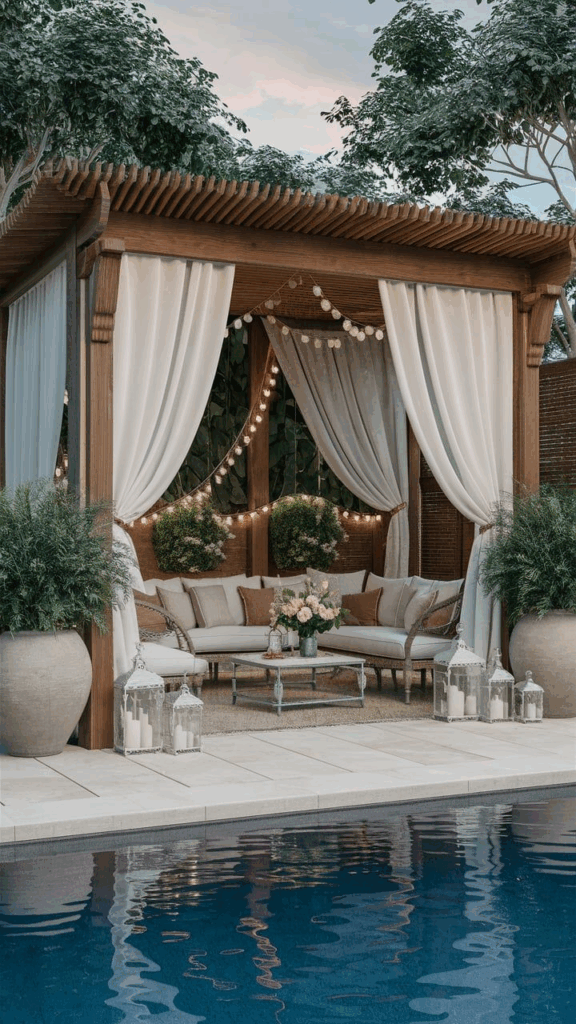
Framing a seating nook or dining area with a pergola creates a semi-sheltered retreat without enclosing the yard entirely. Wooden or metal frames support fabric drapes or outdoor curtains that can be drawn for shade or privacy. Anchoring the structure with planters or lighting further enhances its architectural presence. To soften the space, layer in cushions, throws, and climbing plants like clematis or honeysuckle that wind around the posts. The open design promotes airflow while visually defining the zone. For added comfort, string lights or pendant fixtures can hang beneath the crossbeams. Matching materials to deck boards or fences ensures cohesion across the landscape. Curtains offer flexibility to shift from shaded lounging to open-air dining depending on the occasion. This approach elevates usability without permanent walls or large-scale remodeling, making it ideal for renters or those seeking seasonal versatility. A pergola-clad corner becomes the perfect middle ground between indoor and outdoor living.
Mirror or Glass Feature to Open Space
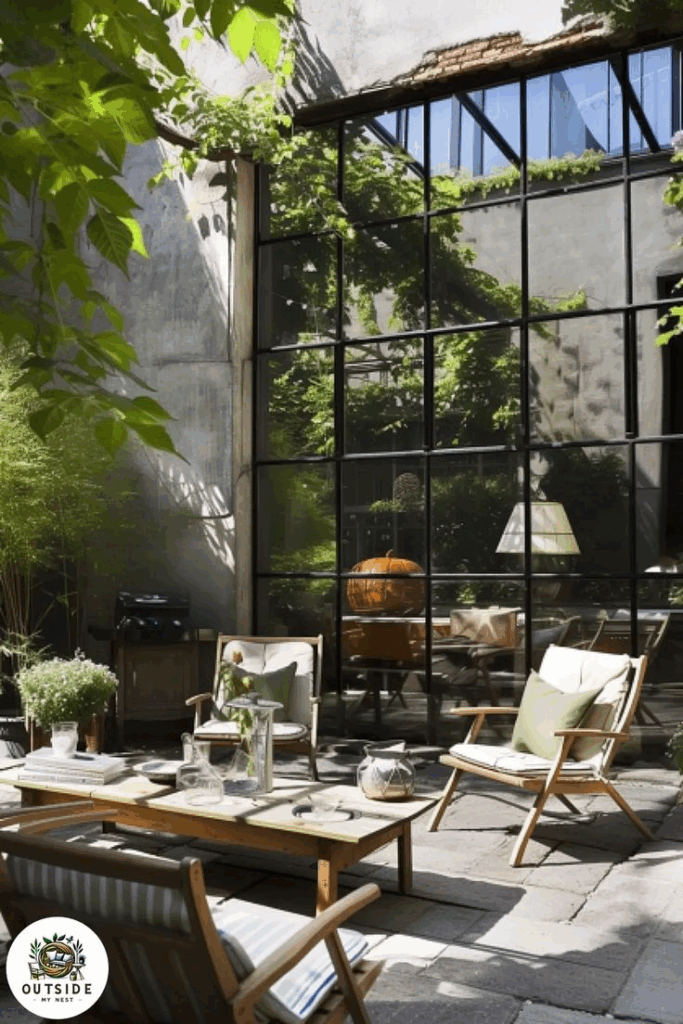
Strategically placed mirrors or glass panels offer an easy way to visually double backyard dimensions. When positioned along fencing or walls, they reflect greenery, natural light, and surrounding textures, instantly opening up tight spaces. Selecting shatterproof, weather-resistant glass ensures durability while maintaining safety. Framing the panels in wood or metal adds structure and aesthetic appeal. For a more artistic effect, consider aged mirror finishes or curved silhouettes. Avoid placing mirrors directly opposite busy walkways to reduce disorientation. Instead, use them to enhance views from seating zones or focal planting beds. These reflective features can amplify both sunlight and ambiance, especially when paired with night lighting. Incorporating mirrored surfaces also adds an unexpected design layer, merging functionality with visual trickery. It’s a subtle tactic that delivers major payoff, particularly in narrow courtyards or walled patios where expanding sightlines is key.
Modular Planter Boxes on Casters
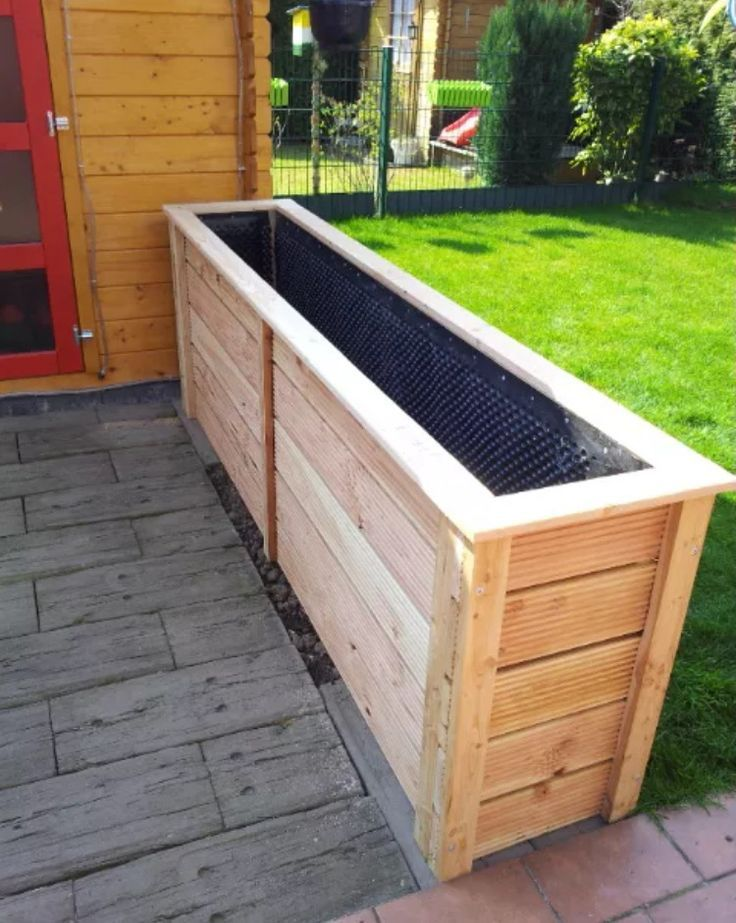
Movable planter boxes offer ultimate flexibility for backyard design. Set on lockable casters, these containers can be shifted based on light needs, seasonal layouts, or event setups. They’re ideal for renters or small yards where permanent installations aren’t possible. Choose deep, durable containers made of cedar, composite, or powder-coated steel. Each box can be themed—herbs in one, succulents in another, vegetables in a third—for diverse impact. Positioning them along borders or walkways lets them define zones or act as privacy barriers. Adding trellis attachments enables vertical growing without ground installation. Integrated drip irrigation systems or water reservoirs reduce maintenance. Rearranging them allows for experimentation with layout and lighting, keeping the space dynamic and responsive. This modular approach combines practicality and creativity, making the most of every inch while supporting changing garden goals.
Hanging String Lights to Soften the Canopy

String lights suspended across pergolas or between posts introduce atmosphere without overwhelming structure. Choose warm-white LED bulbs on black or bronze wire for a classic look. Draping them in soft arcs or zigzag patterns ensures even glow throughout the area. Mounting hooks on beams or tree branches helps keep installation clean and reusable. Spacing the bulbs consistently prevents hot spots and adds rhythm to the space. Combining them with solar uplighting or lanterns brings layered illumination that works from dusk till bedtime. For covered patios, select waterproof fixtures to withstand weather changes. The warm lighting softens architectural edges, draws focus to seating zones, and encourages lingering. It’s a cost-effective way to make a small backyard feel cozy, festive, and welcoming—all while leaving ample room for other features.
Low-Maintenance Native Plant Meadow Patch
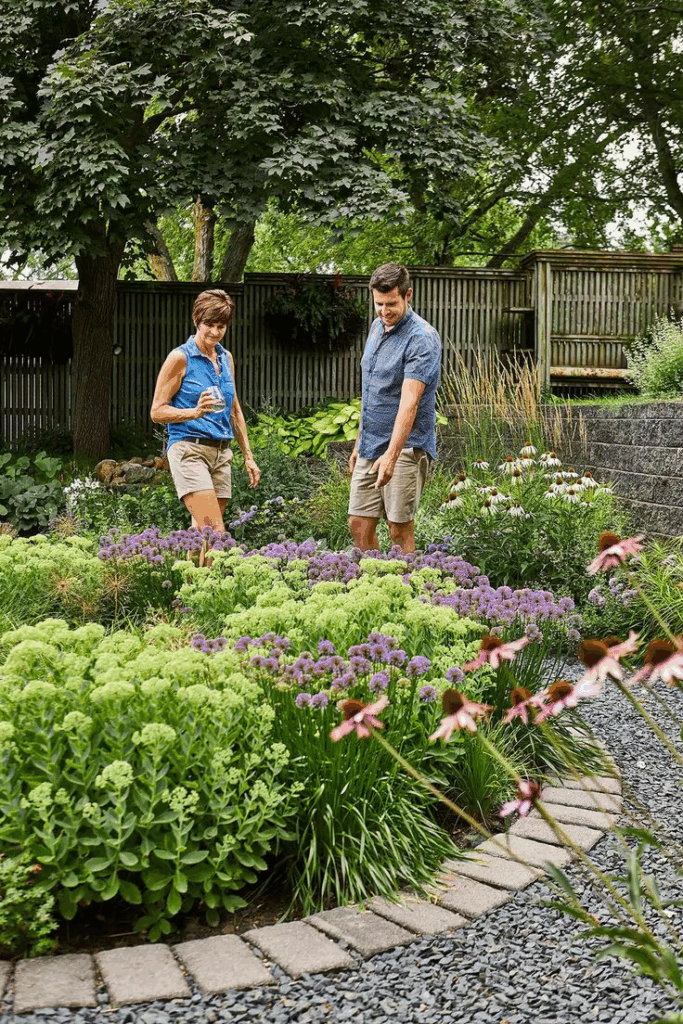
Dedicating a small corner to native wildflowers or meadow-style grasses can dramatically reduce upkeep while enriching biodiversity. Native plants are adapted to local conditions, making them more resilient to pests and drought. Select a mix of flowering perennials, ornamental grasses, and groundcovers that bloom at different times to keep the patch active throughout the year. Grouping by water and sun needs ensures health and growth. Leave space between plantings for mulch or stepping stones to simplify access. This low-maintenance approach supports pollinators and blends effortlessly with both modern and rustic landscapes. Using curved borders or natural rock edges gives the area a softened, organic shape. It functions as a living design element that changes with the seasons while requiring minimal intervention. For small backyards, it’s a sustainable way to introduce color, texture, and life without constant care or complex planning.
